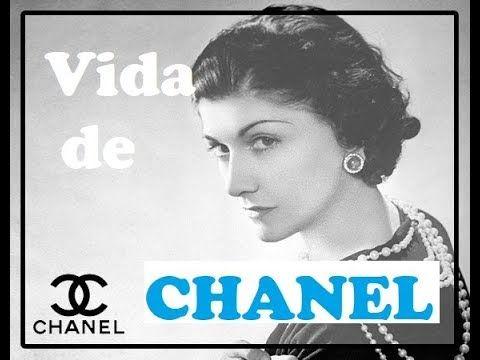Coco Chanel: "I have never told the truth or to the confessor"
Coco Chanel was a true revolutionary icon of fashion, as a result of which she generated an economic fortune that still endures because her signature is accompanied by the necessary glamor and elegance that talents considered by world critics have managed to continue, like Karl Lagerfeld, in the eighties of the last century.
Contents
Coco Chanel tried to hide the fact that she was born surrounded by poverty
Coco Chanel was born in a hospice in Saumur, France, in 1883. And there are so many versions that Chanel herself recounted on purpose while still alive of this avatar, that it is difficult to know the true story.
According to one of its multiple versions, the father was away from the care of the mother, due to his occupations.
She said she was a horse breeder, when in reality, and there seems to be no doubt about this, she sold wine and poor-quality clothes, far from the creations that her daughter would devise much later.
At the time of delivery, the mother was taken to the hospice.
The fascinating life of Coco Chanel
At birth, the girl was named after the nun who attended the birth: Gabrielle. It was at the hospice where they mistakenly added the "s" to the last name.
In another of Coco's tales, told to a close friend, her mother gave birth in the carriages of a train that took her to Saumur.
"I've never told the truth or to the confessor!"
In any case, one of the recurring phrases attributed to Coco Chanel is: "I've never told the truth or to the confessor!" confessor!" Therefore, so much concern to hide her roots has only contributed to her biographers trying to recover the true story of her childhood, something that she did not consider secondary, perhaps because her childhood was really unhappy.

The mother died at the age of 32, after having five children and the father abandoned the family after the event that, as usual, surprised him while traveling trying to do business.
For this reason, Coco Chanel, along with her siblings, spent the next few years in an orphanage, from which she left when she turned eighteen: the age at which if she stayed there, she would become a novice.
After spending a brief time in Paris, she ends up in Moulins, where she begins to work for a manufacturer of baby layettes.
He started in the world of music without much success. From the chorus of a song («Qui a vu Coco dans l´Trocadero) she chose her nickname.
You will be interested
The beginning of his career begins once he has settled back in Paris, with what would be his partner Etienne Balsan and begins to work with Lucienne Rabaté, one of the most prestigious couturiers of the time. In 1909 he opened a hat shop in Paris that already had the sign "Chanel" on the door.
Coco Chanel's first fashion salon
In 1912, with the help of Alfred Capel, she opened a fashion salon and, the following year, opened a boutique outside the French capital.
Coco Chanel manages to attract personalities from high society who, during the First World War, had concentrated in the spas where, skilfully, Chanel had her establishments.
The reconversion of the men's wardrobe as the key to success
During these years he began to explore new possibilities for his garments, such as using knitwear, previously only reserved for underwear. It is, after the war, when Coco Chanel achieves success, based on the reconversion of garments, rather than pure invention.
Watching his friend, the Grand Duke Dimitri, cousin of the Russian Tsar, he creates Slavic-style suits or, copying and adapting the wool sweater, the sailor beret or the tweed vest, from his also friend, the Duke of Westminster, considered the richest man in England.
Chanel uses her imagination and a different way of doing things that is reflected, for example, in her sports suits: "that is, dresses to wear while watching others play sports."
Despite criticism of her style, she was even accused of wanting to transform the ladies into malnourished telegraphers, Coco Chanel imposed the fashion of short hair on women, giving an idea of practicality.
Coco Chanel generalizes the use of pants in women's fashion, extends the use of the short pleated skirt and introduces simple pockets in the suit jacket and black as a color for short dresses. Black was previously only reserved for mourning. Lastly, he created a garment that was soon copied by all the firms: the fitted suit, without a collar, with long sleeves and without cuffs. Chanel also stood out for its perfumes and for the use of abundant costume jewellery.
Despite the fact that she rubbed shoulders with great artists and personalities of her time, according to some chroniclers of the time, at the end of her days it was common to find Coco Chanel in a cemetery, next to the graves, speaking to the dead .
Something she did as a child, when she was surrounded by "unfeeling people," and found a strange comfort in imagining she was engaging in monologues with the dead in a cemetery near her home.
As a very young girl, she would take whatever objects she could find and scatter them around the graves. «One day my family noticed the disappearance of objects, so they decided to lock everything up under lock and key and since then I could no longer take things to my dead, I forgot about them«.
You may also be interested in:
Follow me on Twitter >> An article by José Carlos Bermejo




